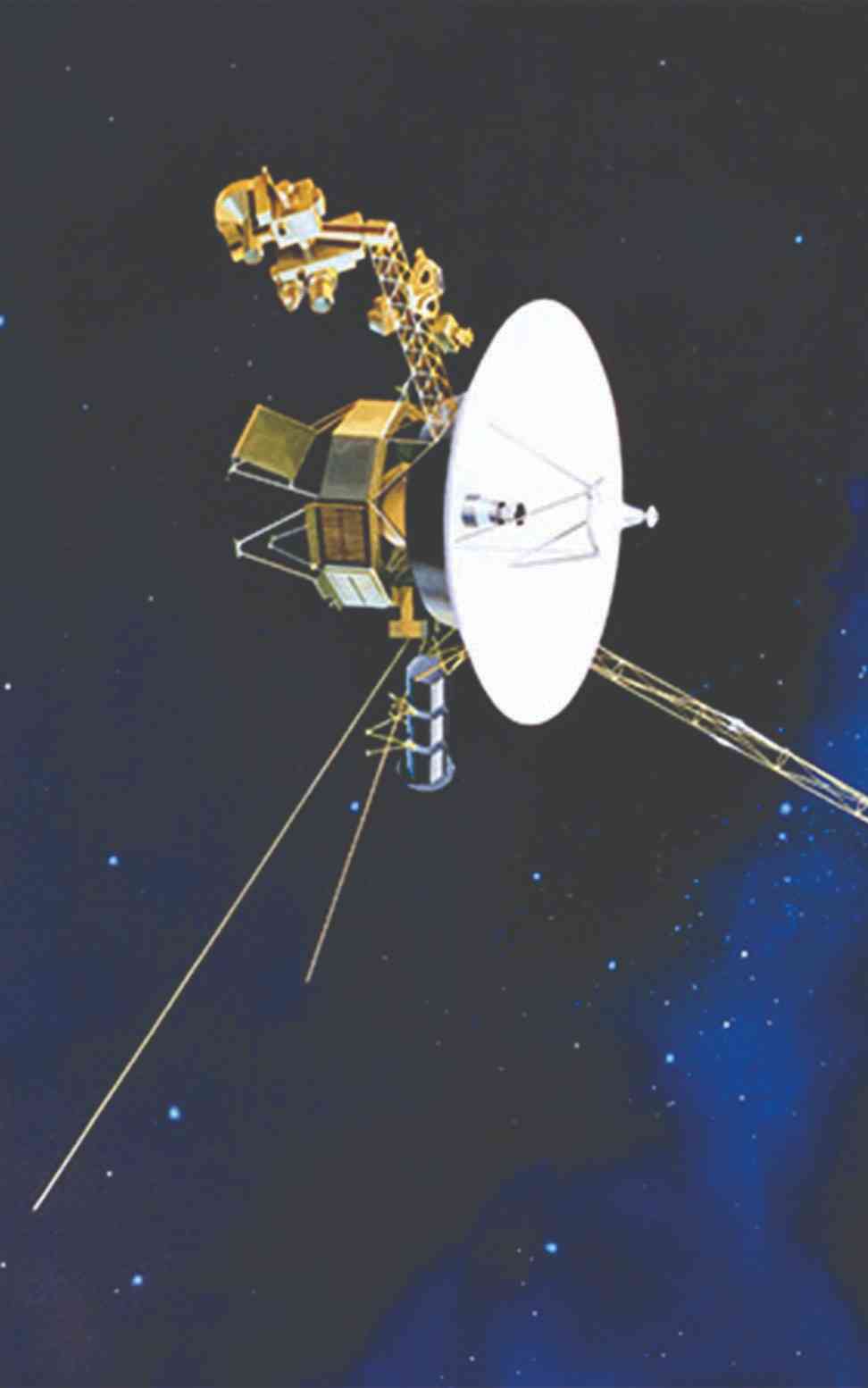
IN 1977, as I began my career learning the art and science of producing newspapers on high-speed presses in Harare, National Aeronautics and Space Administration (Nasa) launched two remarkable spacecraft that would, as of today, become unlikely witnesses to nearly five decades of human history.
The Voyager twins, small by earthly standards, each about the size of an average car, were sent forth with a mission far bigger than themselves.
During the early stages of their journey, a constant stream of realtime communication connected Nasa engineers on earth to the Voyagers, guiding their trajectories and receiving precious scientific data from the vastness of space.
On board each was a golden record, a 12 inch gold plated copper disc etched with sounds, music, and greetings in 55 languages, intended as a “message in a bottle” for any extraterrestrial beings that might encounter them.
The Voyager probes carried recordings of greetings, music, and natural sounds to represent humanity. Launched for a five year mission to study outer planets, Voyagers 1 and 2 instead became long lasting explorers, witnessing major world events from afar.
1977: A world in transition
When Voyager 1 and 2 launched in 1977, Jimmy Carter had just assumed the US presidency. The world grappled with energy shortages while the Cold War persisted — marked by ideological conflict between communism and capitalism.
In Rhodesia, soon to become Zimbabwe, an armed struggle for independence was underway.
- Byo waste pickers demand recognition
- Music as vehicle of cultural exchange
- Floriculture: Diversification, opportunities for entrepreneurial farmers
- Zim launches satellite
Keep Reading
Meanwhile, Nasa capitalised on an extraordinary celestial alignment; the outer planets arranged in a rare configuration that occurs once every 175 years. This cosmic opportunity allowed the spacecraft to visit multiple planetary worlds in a single mission, using each planet’s gravity as a natural accelerator to propel the Voyagers deeper into space on humanity’s first grand tour of the outer solar system.
Escalation of the Cold War
Amidst the Voyager spacecraft’s journey around the sun, international tensions intensified.
In 1979, the Soviet Union launched its invasion of Afghanistan, while the Iran hostage crisis unfolded, resulting in 52 Americans being held captive for 444 days.
As the Voyager probes ventured into the cosmos, earth grappled with a complex geopolitical conflict.
With their golden records, these spacecraft emerged as beacons of hope, serving as silent ambassadors that carried humanity’s narrative far beyond the divides of political strife.
By 1980, the Voyagers had returned detailed images of Jupiter and its moons. That year, Zimbabwe became independent. As personal computers emerged, the spacecraft continued their successful mission in deep space.
Winds of change: 1985–1989
By the mid-1980s, the world was on the threshold of historic transformation. In 1985, Mikhail Gorbachev rose to power in the Soviet Union, unleashing reforms that would soon ripple across the globe.
By then, the Voyager spacecrafts had long surpassed their original missions, having sent back dazzling close ups of Jupiter and Saturn and revealed a collection of extraordinary moons.
Voyager 2, alone among human-made probes, ventured onward to Uranus and Neptune, uncharted territory no other spacecraft has visited.
As Voyager 2 swept past Neptune in 1989, history was in motion on earth: The Berlin Wall crumbled, signalling the collapse of the iron curtain.
Against this backdrop of profound change, the twin Voyagers drifted ever farther from home, each a silent messenger carrying humanity’s story inscribed in gold.
Digital age: 1994–2003
In the 1990s, widespread internet adoption transformed global information, commerce, and culture. By the 1995 launch of Windows 95, Voyager spacecraft, operational for nearly two decades, continued sending increasingly faint signals from billions of kilometres away.
The early 2000s included events such as concerns over Y2K, the expansion of internet based businesses, and the September 11, 2001 attacks on New York and Washington, which led to a shift in global security policies and the subsequent war on terror.
The Iraq war began in 2003. During this period, the Voyager spacecraft continued their journey toward the edge of the solar system, operating continuously through various political and technological developments.
Incredible journey by the numbers
As of 2025, the distances these spacecraft have travelled are staggering. Voyager 1, at 166,40 astronomical units (about 24,9 billion km from earth), is the most distant by a human made object ever. Voyager 2 is trailing at 19,3 billion km.
The scale is difficult to grasp. Voyager 2 is roughly 0,002 light years away from earth. Voyager 1 travels at about 61 000 km per hour, while Voyager 2 moves at 54 000. At those speeds, they continue adding millions of kilometres to their cosmic trek each day, like ships in eternal motion on an ocean of stars.
The final frontier: 2012–2018
A significant milestone occurred during the period following the 2008 financial crisis. Voyager 1 entered interstellar space in August 2012, with Voyager 2 following in 2018. Both spacecraft moved beyond the sun's influence into the interstellar medium, traversing the expansive region between stars.
Amidst developments such as the rise of social media and significant political events like the Arab Spring, these long operating spacecraft advanced across the limits of our solar system, establishing themselves as the most distant human-made objects and extending the reach of human exploration.
Technical developments
Engineering efforts involved in maintaining the Voyagers have been extensive. Communication with Voyager 2 now takes over 40 hours for a round trip, making real time commands impractical.
Engineers address issues such as clogged hydrasine fuel delivery lines, aging power systems, and limited bandwidth, but continue to operate the spacecraft.
In 2023, Voyager 1 encountered a technical problem that disrupted its ability to transmit data. By 2024, Nasa engineers restored normal science operations, demonstrating sustained effort in managing challenges related to remote and aging equipment.
Although scientific achievements of the Voyager mission are significant, the golden records represent its most distinctive cultural contribution.
Developed under the direction of astronomer Carl Sagan, these discs are inscribed with sounds from nature, greetings in 55 languages, musical selections ranging from Bach to Blind Willie Johnson, and 116 photographs depicting life on earth.
The objective was clear: should intelligent extra-terrestrial life encounter these spacecraft, they would also discover a comprehensive representation of humanity, our sounds, culture and an expression of our desire for understanding. The record’s cover provides symbolic instructions for playback, as well as a pulsar map intended to indicate the location of our solar system within the galaxy.
Ultimately, these messages endure as a lasting reflection of the ideals that inspired them, offering a permanent record of humanity’s aspirations as conveyed during the Voyager mission.
Throughout my careers in newspaper production and banking, the Voyager twins have felt like enduring witnesses to history.
Launched during the Cold War, they observed milestones like the Berlin Wall’s fall, the internet’s emergence and AI’s rise.
Despite global upheavals, their mission stayed constant. Soon, as their power fades, they will journey silently through the cosmos for millennia, carrying Earth’s message: “This is a present from a small, distant world, attempting to survive our time so we may live into yours.”
Their legacy may long outlast ours.
Bangure, a filmmaker with a media degree, brings extensive experience in media production and management. He was the inaugural chairperson of the National Employment Council for the Printing, Packaging, and Newspaper Industry in independent Zimbabwe. His passion for data analytics and artificial intelligence drives him to explore cutting-edge technologies, blending his creative background with technical innovation to push boundaries in digital advancement. — [email protected]











